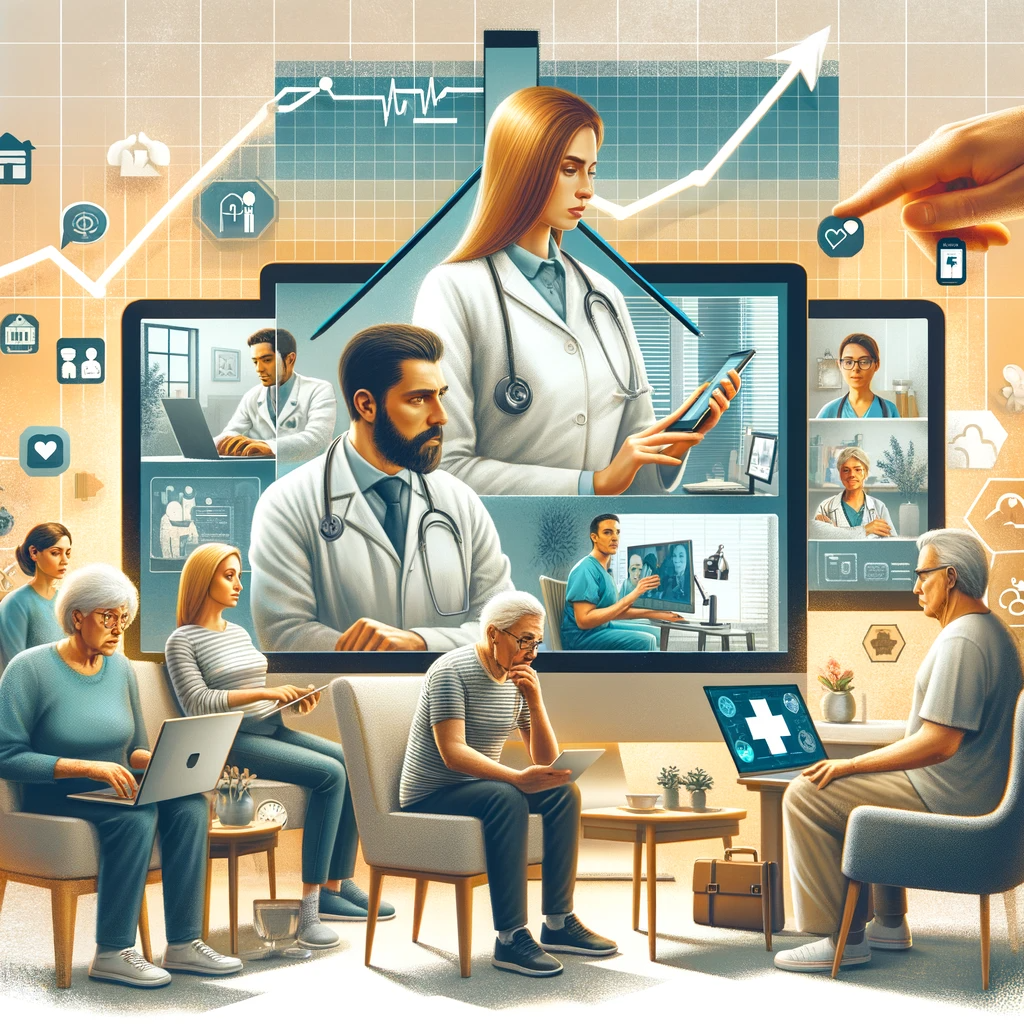The Impact of Telemedicine on Healthcare Outcomes
In the ever-evolving landscape of healthcare, telemedicine has emerged as a transformative force. The convergence of technology and medicine has given rise to telehealth services that are reshaping the way we access and deliver healthcare. From bridging gaps in healthcare to improving patient satisfaction, telemedicine is changing the game. In this article, we will explore the profound impact of telemedicine on healthcare outcomes, delve into its role during the COVID-19 pandemic, and shed light on its promising future.

The Rise of Telemedicine
Telemedicine, often used interchangeably with telehealth, refers to the use of technology to provide remote healthcare services. This game-changing approach has opened new doors to accessing primary care and specialty consultations. Telemedicine services have gained significant traction during the COVID-19 pandemic, offering a safe alternative to in-person care while minimizing the risk of viral transmission.
Bridging Gaps in Healthcare
One of the key benefits of telemedicine is its ability to bridge geographical and logistical gaps in healthcare. Patients in remote or underserved areas can now access healthcare services without the need for long journeys or waiting times. Telemedicine enables healthcare providers to reach patients in the comfort of their homes, ensuring equitable access to care.
Improving Patient Satisfaction
Patient satisfaction is a critical metric for evaluating the quality of healthcare services. Telemedicine has proven to be a game-changer in this regard. Patients appreciate the convenience of virtual care, reduced waiting times, and the ability to consult with healthcare professionals from the comfort of their homes. This improved patient experience contributes to higher satisfaction rates.
Enhancing Healthcare Delivery
Telemedicine has also redefined how healthcare is delivered. By utilizing digital health technologies and electronic health records, healthcare providers can streamline the delivery of care. This not only improves efficiency but also enhances the continuity of care, ensuring that patients receive consistent and coordinated treatment.
Empowering Chronic Disease Management
Patients with chronic diseases require ongoing care and management. Telemedicine plays a pivotal role in empowering patients to manage their conditions more effectively. Regular virtual check-ins, remote monitoring, and timely interventions enable better disease management and early detection of potential complications.
The Role of Telemedicine During the COVID-19 Pandemic
The COVID-19 pandemic pushed the healthcare industry to adapt rapidly to ensure patient safety. Telemedicine emerged as a crucial tool in this fight. It allowed patients to receive necessary care while minimizing the risk of exposure to the virus. Healthcare professionals and patients quickly embraced telemedicine, recognizing its potential to revolutionize healthcare delivery.
The Future of Telemedicine
As we look ahead, it is evident that telemedicine is here to stay. Its potential to improve health outcomes, increase access to care, and enhance patient and provider experiences cannot be overstated. The adoption of telemedicine is likely to continue growing, with innovative applications in various healthcare sectors.
Empirical Foundations of Telemedicine Interventions
The effectiveness of telemedicine is supported by empirical evidence. Studies have shown that telemedicine interventions can lead to improved patient outcomes, reduced hospital readmissions, and increased adherence to treatment plans. Healthcare professionals and policymakers are increasingly recognizing the value of telemedicine in achieving better healthcare outcomes.
Overcoming Barriers to Telemedicine
While telemedicine has tremendous potential, it also faces certain challenges. Barriers to access, including limited internet connectivity and technology literacy, need to be addressed to ensure that all patients can benefit from telehealth services. Building trust in telemedicine among both patients and healthcare professionals is also crucial for its continued success.
Conclusion
Telemedicine has revolutionized healthcare by improving access to care, enhancing patient satisfaction, and transforming healthcare delivery. Its role during the COVID-19 pandemic has highlighted its importance in times of crisis. As we move forward, the future of telemedicine looks promising, with the potential to further improve health outcomes, empower patients, and shape the healthcare landscape for years to come. The adoption of telemedicine is not just a trend; it is a fundamental shift that holds the key to a more accessible and efficient healthcare system.